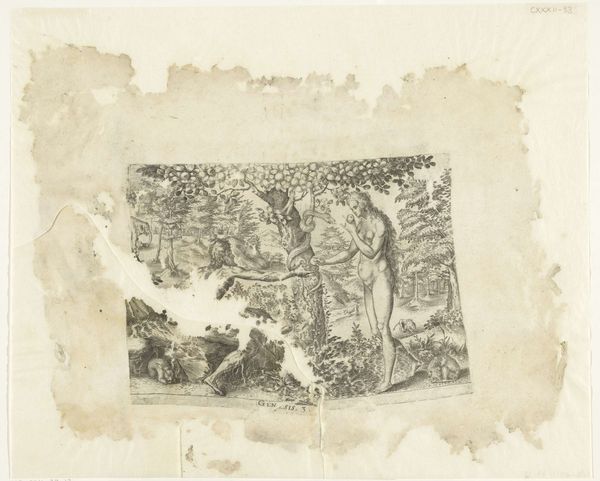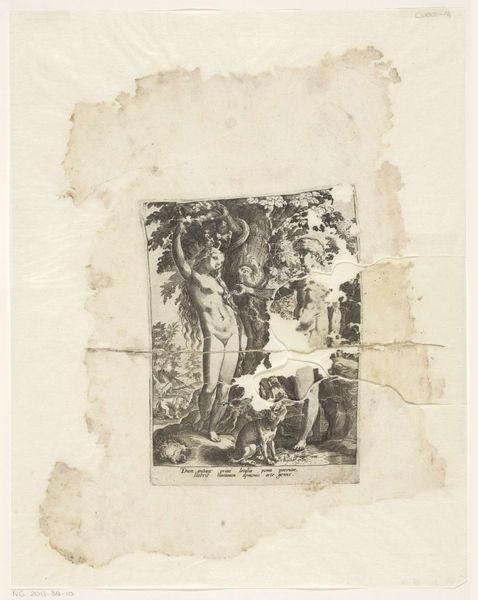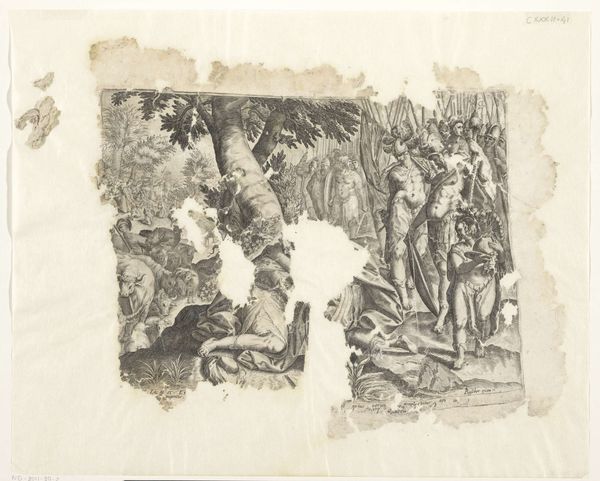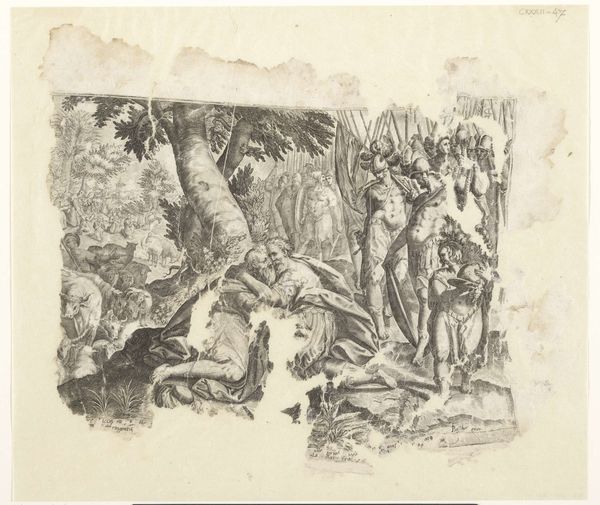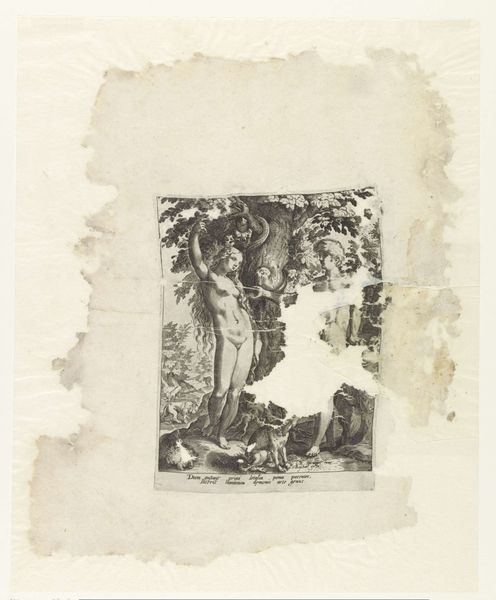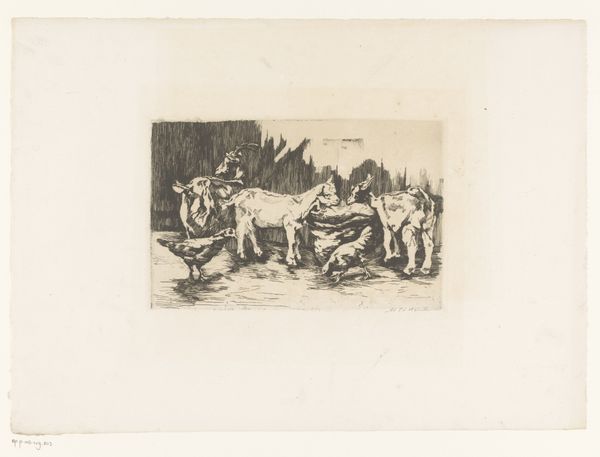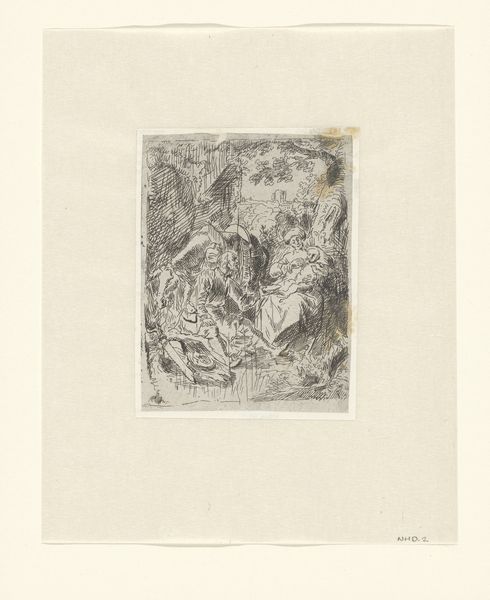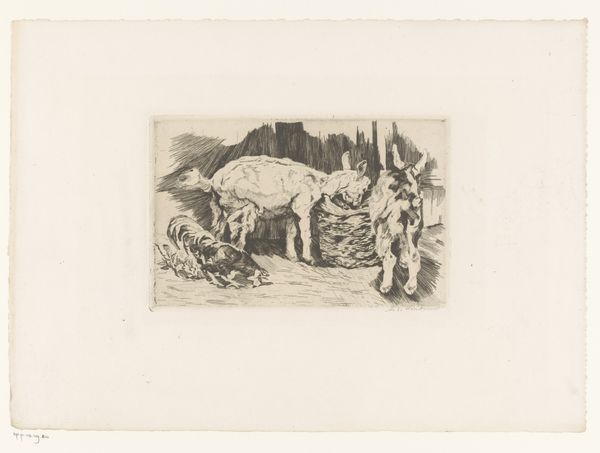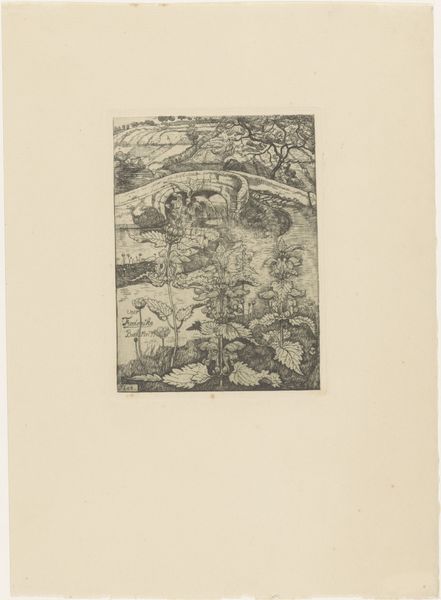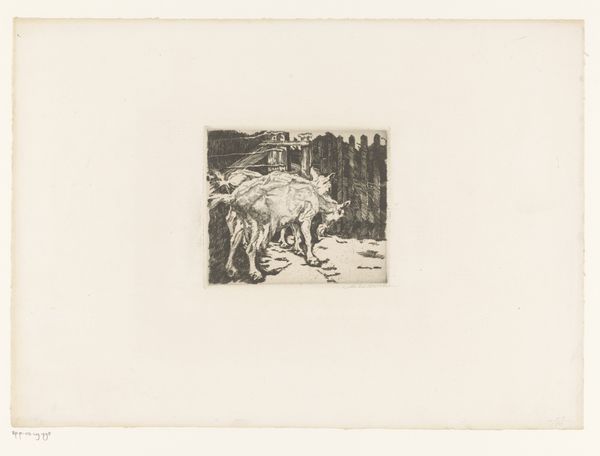
print, engraving
# print
#
landscape
#
figuration
#
history-painting
#
northern-renaissance
#
nude
#
engraving
Dimensions: height 298 mm, width 384 mm
Copyright: Rijks Museum: Open Domain
Curator: Oh, there's a stark drama to this print, an air of inevitable sadness. It’s rendered with such precision. Editor: Indeed. We’re looking at an engraving entitled "Adam en Eva," dating back to somewhere between 1570 and 1590. It's held at the Rijksmuseum. Though the artist remains anonymous, the piece tells a story we all recognize, and it tells it within the artistic language of the Northern Renaissance. Curator: The symbolism feels particularly loaded, even for its time. I am thinking of Eve's pose. She appears simultaneously vulnerable and complicit, almost defiant as she plucks the fruit. The serpent coils menacingly, a physical embodiment of temptation. Editor: And note how the composition itself reinforces this. Adam is presented as reclining and somewhat passive. Eve is active and standing beneath the tree, positioned almost as if she were straddling the line between paradise and the impending expulsion. The division between light and dark also underscores this dynamic, reflecting the transition from innocence to awareness. This work also engages in its moment by responding to debates around free will, responsibility and human weakness. Curator: I see it more as an introspective commentary on the burdens of choice. Perhaps, they knew all along. Perhaps, free will includes a taste of bitter apples. Editor: Do you mean they chose the 'knowledge' they felt excluded from to redefine the garden itself? In which case it does become about responsibility: not necessarily because they did wrong but that they knowingly broke a boundary to evolve as a species? Curator: Yes, precisely! Each visual element contributes to this atmosphere. Even the delicate lines of the engraving highlight the fragility of their existence after their choice, which is to me as captivating as the moment of choice, the weight of knowing. Editor: And that speaks to how art operates within and also reflects a culture: religious dogma gets interpreted and molded as both political messaging and philosophical consideration. Thank you for this image reading! It helped bring it to life! Curator: My pleasure! These old artworks keep offering us new, relevant visions.
Comments
No comments
Be the first to comment and join the conversation on the ultimate creative platform.
